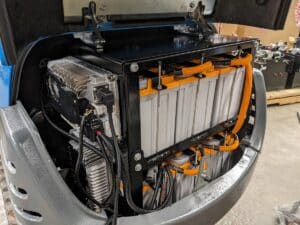Metrology Glossary: Input Resistance
What Is Input Resistance?
Input resistance, a fundamental concept in electronics, quantifies a circuit’s resistance to incoming current, denoted in ohms (Ω). It signifies the ratio between applied voltage at the input terminals and the resultant current flow. Essentially, it is a circuit’s capacity to impede incoming current. This parameter is crucial in circuit design and analysis, influencing signal transmission and amplification. A higher input resistance suggests minimal current leakage and enhanced signal integrity.
Why Is Input Resistance Important?
- Amplifier Design: Input resistance is crucial for preserving signal strength in amplifier design, especially in high-impedance sources. A high input resistance minimizes current drawn from the source, maintaining signal integrity, while a low input resistance can distort the signal.
- Circuit Analysis: Input resistance is essential for analyzing complex circuits, predicting component interaction and current flow. Engineers calculate combined input resistance of stages to ensure proper signal transmission without overloading components.
- Voltage Measurement Accuracy: In instruments like voltmeters, high input resistance ensures accurate voltage readings by minimizing current drawn from the circuit under measurement. Mismatched resistance can lead to inaccuracies.
- Impedance Matching: Input resistance matching between source and amplifier optimizes power transfer and signal quality by minimizing signal reflection, ensuring efficient transmission.
- Sensor Design: Input resistance compatibility between sensor output and data acquisition system ensures accurate signal transmission and interpretation.
- Noise Reduction: High input resistance reduces noise in circuits by minimizing current leakage paths, improving signal-to-noise ratio and overall performance.
Related Terms
Loop resistance comprises the combined resistance of both the thermocouple wires and any connectors or terminals within the circuit....
Insulation resistance refers to the effectiveness of an insulating substance in disrupting the passage of electrical current....
Products and Services
Further Reading

The short answer is, likely yes. As a mobile systems integrator, we always have our eye on the future. An important part of predicting where the market is going is watching regulations that are impacting the consumer vehicle market.
May 26, 2022


As the trend toward electrification of mobile equipment accelerates, it is becoming increasingly apparent that simply looking at the power rating of the current Internal Combustion Engine (ICE) and using that to assume battery power requirements is not enough.
September 27, 2022



